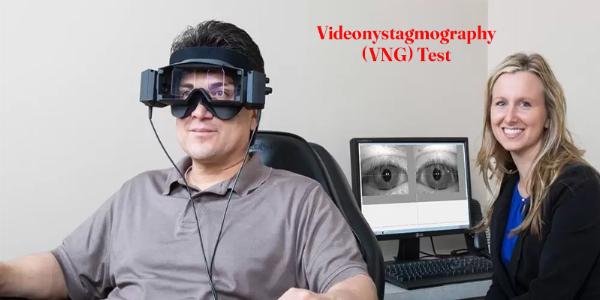Videonystagmography (VNG) Test

Strong 8k brings an ultra-HD IPTV experience to your living room and your pocket.
Videonystagmography (VNG) is a test that evaluates the vestibular system, which is responsible for balance and spatial orientation. The test uses a combination of infrared cameras and motion sensors to record eye movements. These eye movements, known as nystagmus, can be involuntary and occur in response to head movements, cold water irrigation, or other stimuli.
What is VNG used for?
VNG is used to diagnose a variety of conditions that affect the vestibular system, including:
Vertigo
A sensation of dizziness or spinning
Meniere's disease:
A disorder of the inner ear that can cause vertigo, tinnitus, hearing loss, and a feeling of fullness in the ear
Labyrinthitis
An inflammation of the inner ear that can cause vertigo, nausea, vomiting, and hearing loss
Vestibular neuritis
An inflammation of the vestibular nerve that can cause sudden vertigo, nausea, vomiting, and hearing loss
Migraine-associated vertigo
A type of vertigo that can occur in people with migraines
Central vertigo
Vertigo caused by a problem in the brain, such as a stroke or tumor
What are the side effects of VNG?
VNG is generally a safe and well-tolerated test. However, some people may experience mild side effects, such as:
- Nausea
- Vomiting
- Dizziness
- Lightheadedness
These side effects are usually temporary and go away on their own.
What is the difference between VNG and audiometry?
Audiometry is a test that measures hearing. نوار گوش برای سرگیجه is a test that measures balance. While both tests can be used to diagnose problems with the inner ear, they are different tests that measure different things.
What diseases can be diagnosed with VNG?
VNG can be used to diagnose a variety of conditions that affect the vestibular system, including:
- Vertigo
- Meniere's disease
- Labyrinthitis
- Vestibular neuritis
- Migraine-associated vertigo
- Central vertigo
In addition, VNG can also be used to assess the function of the vestibular system after surgery or other treatments.
How is VNG performed?
VNG is typically performed in an outpatient clinic or doctor's office. The test usually takes about 30 minutes to an hour.
During the test, you will be seated in a chair and asked to wear special goggles that contain infrared cameras. These cameras will record your eye movements.
The technician will then perform a series of tests, which may include:
Ocular testing
This test assesses your ability to follow visual targets with your eyes.
Caloric testing
This test involves irrigating your ear canals with warm and cold water. The technician will observe your eye movements to see how they respond to the temperature changes.
Positional testing
This test involves moving your head and body into different positions. The technician will observe your eye movements to see if they trigger any nystagmus.
What are the results of VNG?
The results of your VNG test will be interpreted by a doctor who is trained in vestibular disorders. The doctor will consider your test results along with your medical history and other symptoms to make a diagnosis.
If your VNG test is abnormal, it may indicate a problem with your vestibular system. The doctor will then recommend further testing and treatment, as needed.
I hope this helps! Let me know if you have any other questions.
Note: IndiBlogHub features both user-submitted and editorial content. We do not verify third-party contributions. Read our Disclaimer and Privacy Policyfor details.


